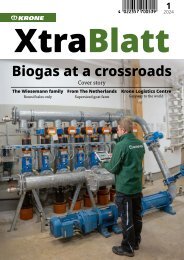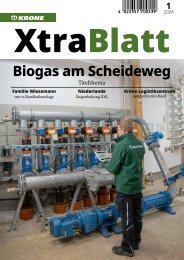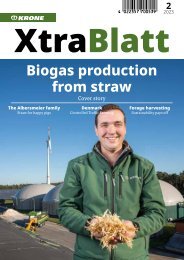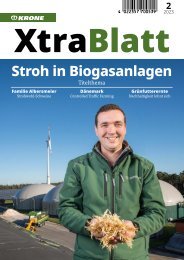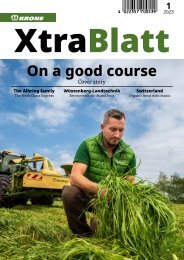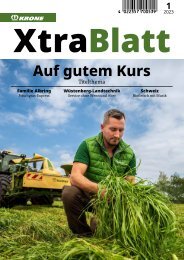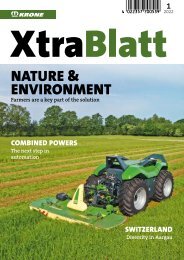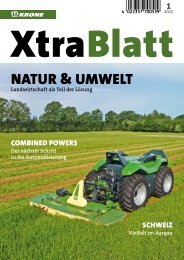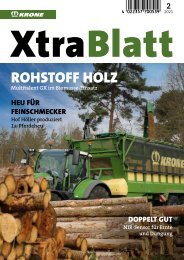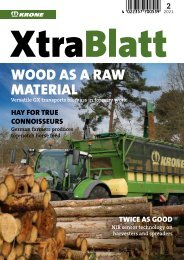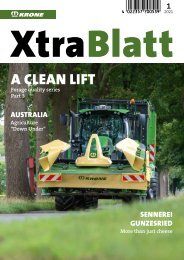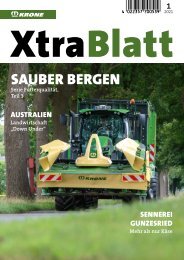XtraBlatt Issue 02-2017
You also want an ePaper? Increase the reach of your titles
YUMPU automatically turns print PDFs into web optimized ePapers that Google loves.
ST BE RIGHT<br />
weather, there were a few things that could have been<br />
done to improve forage quality where more knowledge<br />
and sensibility on the part of some of those involved had<br />
been brought to play.”<br />
Because of the forage maize harvest results in 2016<br />
and <strong>2017</strong> it was plain how difficult it is to produce optimum<br />
silage, says the vet, who himself runs a farm.<br />
“At least in our region, the dry matter content in both<br />
these years differed greatly. Hot weather in 2016 led to<br />
the maize ripening too quickly. And in <strong>2017</strong>, the spring<br />
drought coupled to our heavy, loamy soil meant emergence<br />
was late. Accordingly, ripening was very uneven<br />
with resultant too-low dry matter. Sometimes water<br />
was running out of the silo during consolidation. From<br />
the point of view of the cow, however, optimum silage<br />
quality must remain in the foreground. Despite the<br />
QUALITY BEFORE SPEED<br />
This advice he writes not only in the guest book of the<br />
harvesting contractor, but also in that of the farmer. For<br />
grass silage, good feed quality already begins in the care<br />
of the grass sole and entails at the least regular reseeding.<br />
And with forage maize, variety selection means<br />
the foundations for good silage can be laid right at drilling<br />
so that all areas do not need to be cut at the same<br />
time within a very short window. Practical here could be<br />
contractor and farmer planning together. The same also<br />
applies, from this vet’s sight, for timely and regular sampling<br />
of dry mater content before the harvest. “Here, the<br />
contractor can have a very positive effect, when he makes<br />
an effort and when the farmer accepts the advice. Incidentally,<br />
this applies not only to maize but also at least<br />
as intensively to grass silage. Mostly, too much is mowed<br />
at one time and driven in to the clamp too late. The grass<br />
then has a dry matter of 40 to 45%, and not 35% as it<br />
should be. With an exactly planned logistic operation,<br />
this can be avoided.”<br />
He also sees as unacceptable the efforts to harvest<br />
as much material as possible from each area. The crop is<br />
mowed too low, and turning grass can be akin to grubbing,<br />
with the very last leaf scratched together during<br />
tedding. “The result is an ash content way over the sensible<br />
margin, i.e. substantially above 10% of dry matter.<br />
This means the silage has already lost out as far as a cow<br />
is concerned, before it has even landed in the clamp. And<br />
the result has to be sorted out later by we vets. Surely<br />
the better way is to avoid illness from the beginning.”<br />
49



